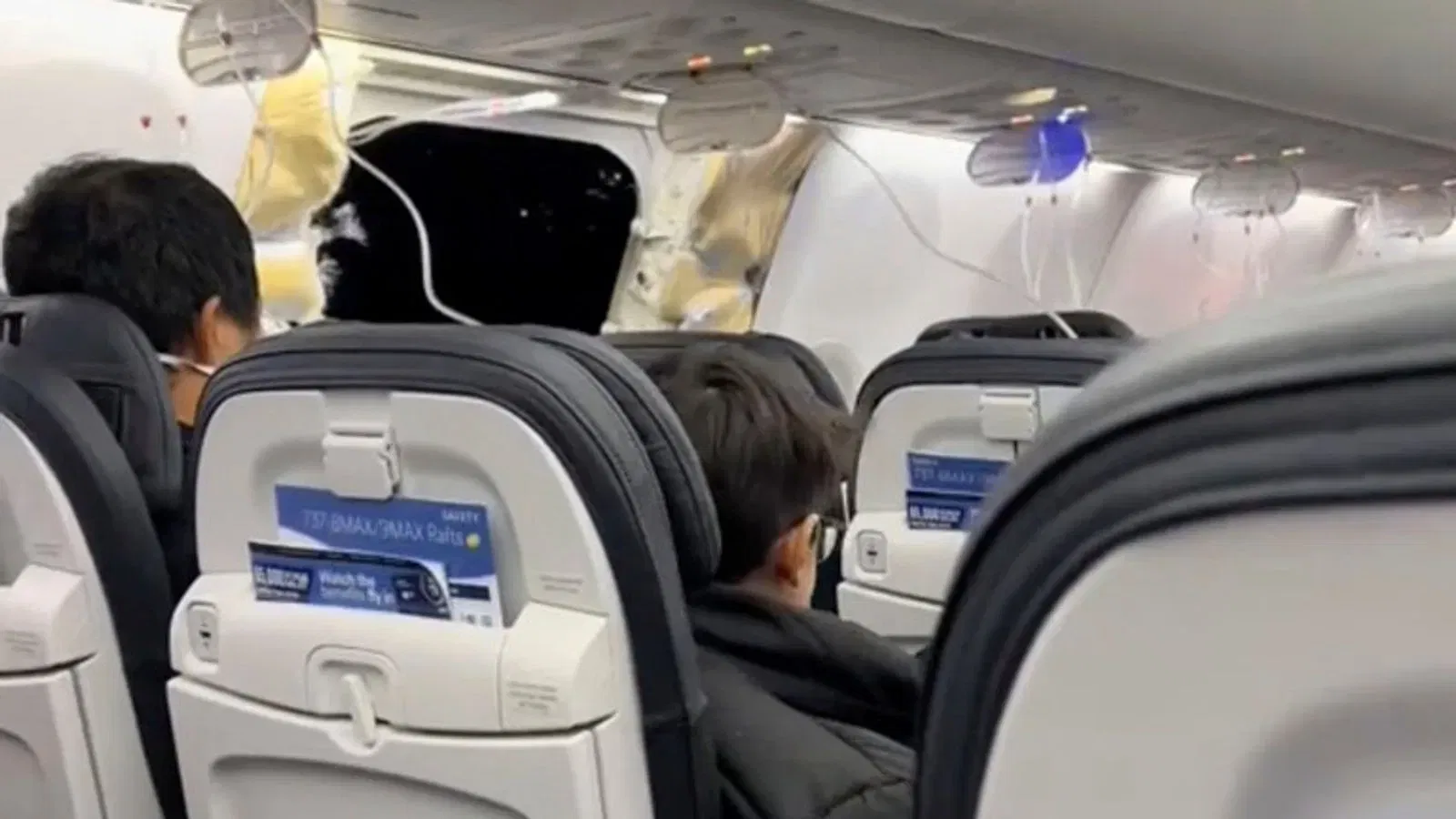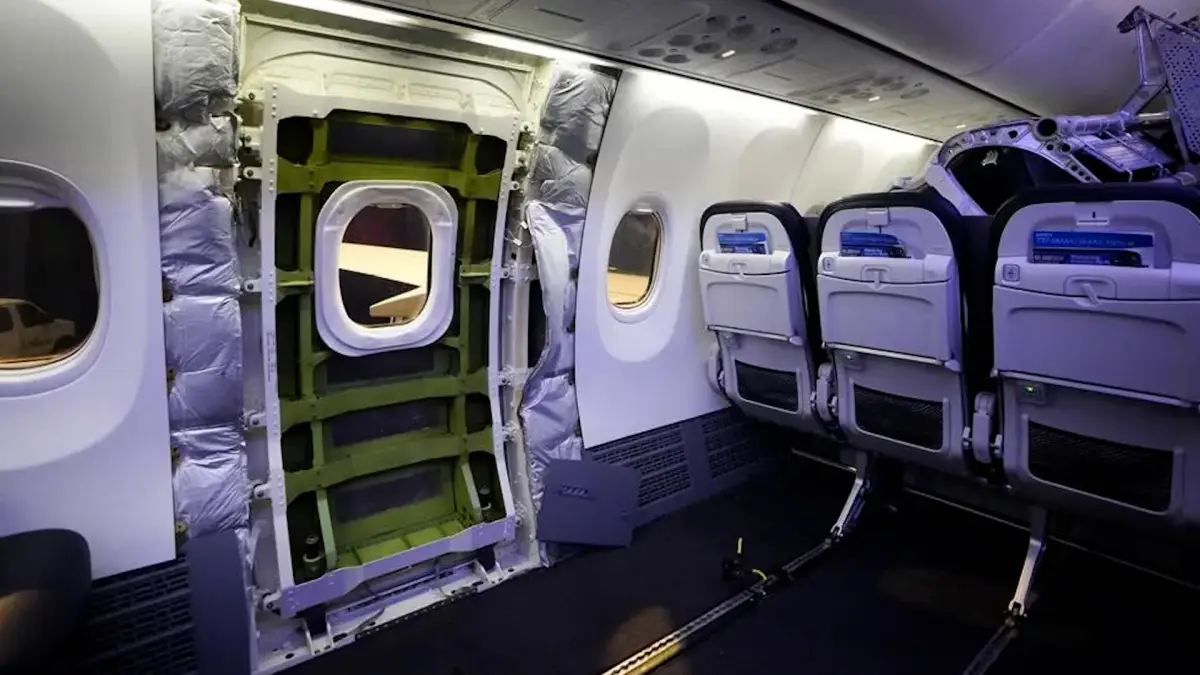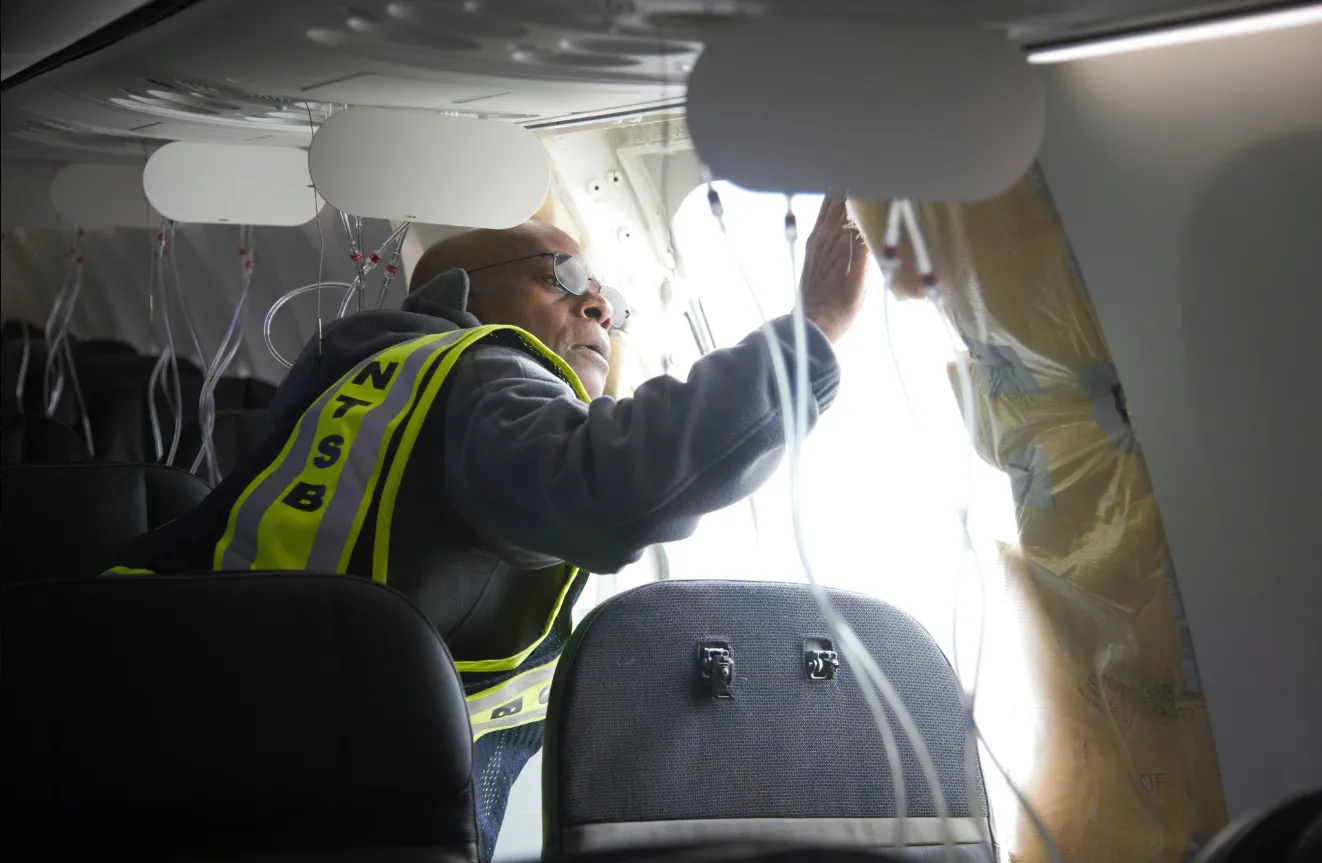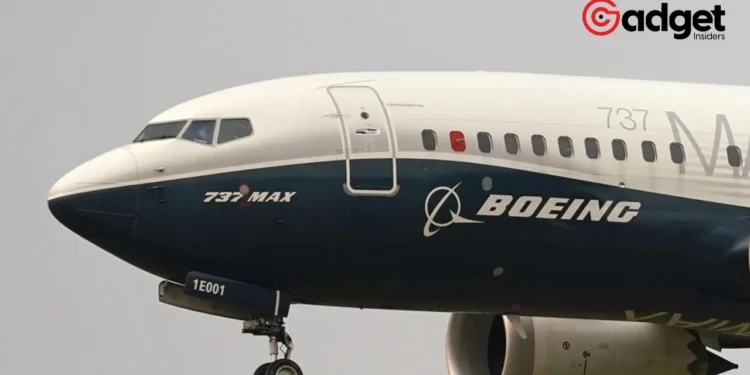In an era where air travel is considered safer than ever, a startling incident involving an Alaska Airlines Boeing 737 has jolted the aviation industry, leading to a high-profile criminal investigation by the Department of Justice (DOJ). This inquiry not only casts a shadow over Boeing’s operations but also raises questions about the overarching safety measures and regulatory compliance within the aviation sector.
Alaska Airlines: The Incident That Shook The Skies
On a seemingly routine flight departing from Portland, Oregon, passengers and crew aboard an Alaska Airlines flight experienced a harrowing moment when the aircraft suffered a significant structural blowout. The incident, which occurred just seven minutes after takeoff, forced the pilots to execute an emergency landing, miraculously resulting in no serious injuries.
The focal point of the DOJ’s investigation revolves around a panel designed to cover an area reserved for an additional emergency door on a Max 9 jet, which detached mid-flight, leaving behind a gaping hole. This unsettling event has thrust Boeing into the limelight, intensifying scrutiny over its safety protocols and manufacturing processes.

A Trail of Investigations
The DOJ’s decision to initiate a criminal investigation into the matter is not without precedent. The investigation seeks to determine whether Boeing adhered to a previously established settlement, stemming from a federal probe into the safety of its 737 Max aircraft, in the aftermath of two devastating crashes in 2018 and 2019.
These incidents, which claimed the lives of 346 people, have since become a significant blemish on Boeing’s safety record, prompting a $2.5 billion settlement in 2021, inclusive of a $244 million fine.
“In an event like this, it’s normal for the DOJ to be conducting an investigation,” Alaska Airlines said in a prepared statement. “We are fully cooperating and do not believe we are a target of the investigation.”

Boeing has acknowledged in a letter to Congress that it cannot find records for work done on the door panel of the Alaska Airlines plane. “We have looked extensively and have not found any such documentation,” Ziad Ojakli, Boeing executive vice president and chief government lobbyist, wrote.
Boeing’s Response and Regulatory Scrutiny
In the wake of the Senate hearing and the ensuing criticism, Boeing has attempted to mend fences with the National Transportation Safety Board (NTSB) by furnishing names of employees involved in 737 door maintenance.
However, the company’s admission of being unable to locate records for the work done on the door panel of the Alaska Airlines plane has done little to quell the uproar.
The DOJ has opened a criminal investigation into the Alaska Airlines 737 blowout, a report says https://t.co/FOFnOh6hF6 pic.twitter.com/uWq9a5Oz47
— Dorothy Knable (@dorothyknable) March 12, 2024
The Federal Aviation Administration (FAA) has issued a directive to Boeing, giving the aerospace giant 90 days to address quality-control issues highlighted by the incident and subsequent investigations. This directive underscores a growing concern over Boeing’s safety culture, despite attempts to overhaul its processes following the Max 8 jet tragedies.
The Road Ahead
As the DOJ forges ahead with its investigation, the aviation industry watches closely. The outcome of this probe could have far-reaching implications for Boeing, potentially influencing regulatory practices and safety protocols across the sector.
The incident serves as a stark reminder of the importance of stringent quality control measures and the need for transparent, collaborative efforts between manufacturers, airlines, and regulatory bodies to uphold the safety of air travel.

In an industry where safety is paramount, the Alaska Airlines incident underscores the continuous need for vigilance, accountability, and improvement.
As Boeing navigates through this turbulence, the company’s actions and the industry’s response will be closely monitored, not only by regulatory authorities but also by the flying public, whose trust in air travel hinges on the assurance of uncompromising safety standards.










